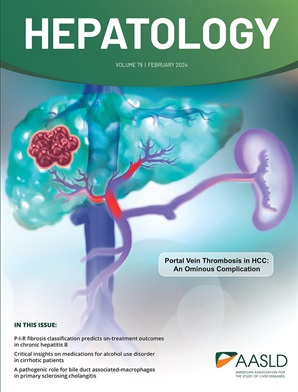miRNAs in HCC, pathogenesis, and targets
IF 12.9
1区 医学
Q1 GASTROENTEROLOGY & HEPATOLOGY
引用次数: 0
Abstract
Liver cancer is the third leading cause of cancer-related mortality worldwide. Hepatocellular carcinoma (HCC), the most common type of primary liver cancer is driven by complex genetic, epigenetic, and environmental factors. MicroRNAs, a class of naturally-occurring small non-coding RNAs play crucial roles in HCC by simultaneously modulating expression of multiple genes in a fine-tuning manner. Significant progress has been made in understanding how miRNAs influence key oncogenic pathways, including cell proliferation, apoptosis, angiogenesis, and epithelial-mesenchymal transition (EMT), as well as their role in modulating the immune microenvironment in HCC. Due to the unexpected stability of miRNAs in the blood and fixed HCC tumors, recent advancements also highlight their potential as non-invasive diagnostic tools. Restoring or inhibiting specific miRNAs have offered promising strategies for targeted HCC treatment by suppressing malignant hepatocyte growth and enhancing antitumor immunity. In this comprehensive review, we consolidate previous research and provide the latest insights into how miRNAs regulate HCC and their therapeutic and diagnostic potential. We delve into dysregulation of miRNA biogenesis in HCC, the roles of miRNAs in proliferation and apoptosis of malignant hepatocytes, angiogenesis and metastasis of HCC, immune microenvironment in HCC and drug resistance. We also discuss the therapeutic and diagnostic potential of miRNAs and delivery approaches of miRNA drugs to overcome the limitations of current HCC treatment options. By thoroughly summarizing the roles of miRNAs in HCC, our goal is to advance the development of effective therapeutic drugs with minimal adverse effects and to establish precise tools for early diagnosis of HCC.求助全文
约1分钟内获得全文
求助全文
来源期刊

Hepatology
医学-胃肠肝病学
CiteScore
27.50
自引率
3.70%
发文量
609
审稿时长
1 months
期刊介绍:
HEPATOLOGY is recognized as the leading publication in the field of liver disease. It features original, peer-reviewed articles covering various aspects of liver structure, function, and disease. The journal's distinguished Editorial Board carefully selects the best articles each month, focusing on topics including immunology, chronic hepatitis, viral hepatitis, cirrhosis, genetic and metabolic liver diseases, liver cancer, and drug metabolism.
 求助内容:
求助内容: 应助结果提醒方式:
应助结果提醒方式:


